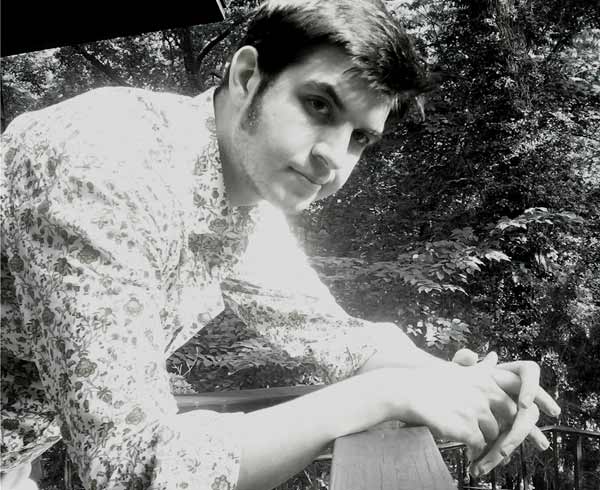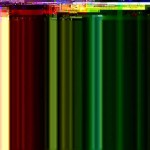On April 5, 2013 at Zankel Hall at Carnegie Hall, the ACO will present its next Orchestra Underground coLABOratory: Playing It UNsafe featuring the music of Du Yun, Judith Sainte Croix, Dan Visconti, Troy Herion, and Ray Lustig. We asked 5 questions to Dan Visconti about his ACO premiere, Glitchscape.
What led you to build a piece around sonic “detritus” like old Speak & Spell toys? A declaration of post-digital faith, that what’s old is always new again? Or perhaps in the sense that Milan Kundera discusses Thomas Mann’s obsession with magic lanterns and primitive Victrolas in The Magic Mountain, that like “a true novelist, Mann characterizes an era by practices soon to be forgotten, and which the usual histories miss”?
Something along those lines—there’s a great poignancy to worn out things, and a certain quaintness to obsolescence in our disposable society, and I wanted to transform these beat-up and broken objects into something that sang with a new voice—a voice their designers never intended. The process of transformation—and its close cousin, distortion—are both very important in my music, and it struck me as a compelling challenge to create a piece based around warped, unintentional, and generally unwanted sounds.
I was also intrigued by what would happen when I tried to have these strange, barely-controllable buzzing and whirring noises going off on the same stage with a classical orchestra—how would they tolerate this new challenge? How should I handle writing their parts to interface with these instruments that can’t be trusted to play a single bar in tune or in time? The orchestra is something of a relic itself, so the idea of the old coexisting with the new seemed to have at least some plausible basis.

Dan Visconti at Copland House
I don’t hold a full-time teaching position so almost all of my music is written on commission, and I’ve been lucky to have more than a few orchestra gigs; and given the breakneck rehearsal schedules of most major orchestras (geared to churning out performances of music the players are almost always familiar with), I’d never have a chance to do something like Glitchscape for your typical orchestra subscription concert. That’s why I wanted to go for something really adventurous—something that I wasn’t sure could work—back when I began brainstorming a new piece for ACO.
How does Simon Tarr’s visual component fit into all this? Is it deliberately “lo-tech”, to match the ethos of the music?
Simon’s been cooking up a really amazing live video with which he will improvise onstage in real time—and yes, it definitely draws from that same lo-tech aesthetic but uses some very high-tech software to achieve a reimagining of the low-fi aesthetic with the capabilities of modern animation and film editing software. In practice, this helps Simon create lots of the kind of vivid glitching we’re after more reliably—because waiting for glitches—and of course, interesting, beautiful glitches—to happen could take a long time otherwise.
The video will also be connected to a mic feed so that visual movement can be made to sync with the changing pulse of the orchestra—kind of the reverse of a click track. As a composer I’m always trying to figure out how to make the concert experience special again, how to make people want to come out from the comfort of their own apartments and be part of a live event; this is definitely a piece that can’t be represented by a nice, clean studio recording.
- Image by Simon Tarr
- Image by Simon Tarr
- Image by Simon Tarr
Did any technical difficulties arise in incorporating the antique sonic artifacts into a chamber orchestra texture? Did you sample the sounds you wanted, or will the audience be able to see the percussionists manipulating the Speak & Spells onstage?
There’s a sense in which this piece is nothing but technical difficulties, since it’s based on circuit-bent toy instruments being coaxed into making all kinds of grunts and bleeps that their manufacturers never intended—and no given run-through of the piece ends up being much like the last! In itself, this is incredibly exciting but as you can imagine, it clashes head-on with the ideals of classical tradition (of which the orchestra is perhaps the crowning jewel). Most difficulties arise because I’m interested in capturing all the cool kinds of things that happen when room is left for so-called “happy accidents”, but of course the orchestra is used to traditional pieces where the composer’s goal is notational clarity, not creating a framework for experimentation. It was a real challenge to get these two worlds to play nice while retaining something of the unique qualities that makes them so exciting in the first place—the timbral diversity and precision of the orchestra and the rawness and unpredictability of the glitch instruments.
I’ll be manipulating all the electronics from onstage myself, as creating the kind of electronics part that could be succinctly notated and learned by other performers would have required fairly tame parts—but with the score memorized and hours of tinkering around with these instruments under my belt, I’ll be able to capture the kind of wild, improvisatory spirit I’m after. There are a few samples of things like turntable hiss in order to make setup less cumbersome, but in addition there are three Speak & Spell toys as well as a two-octave Yamaha keyboard that really wails after I gave it a few “adjustments”.
How does Glitchscape fit in with your earlier work, much of which is centered on various types of vernacular and folk music? Is there a connection between, say, the grainy, “undomesticated” sounds of an old-time fiddler and the obsolete technologies you’re exploring now?
Absolutely—I think there’s a direct connected between the textural richness and improvisatory quality of vernacular traditions and the raw, nonchalant quality of these “unintentional” noises; in fact, the phenomenon of rock music has thrived at a kind of meeting point of vernacular traditions and technology.
My first piece written for the Kronos Quartet starts with a recording (created from the quartet’s performance of a blues tune) processed to sound like it’s on an old 78-RPM, and then the quartet plays with and against this recording in a series of wild, bluesy outbursts; so I think there’s always been an awareness and interest in the artifacts of recorded sound (and pop music traditions in particular) as well as the music being recorded. I think the experience of listening to records (or playing with Speak & Spell toys, or recording a mixtape) all have poignant emotional experiences associated with them, something that feels real and direct because of the wear and imperfection—something that feels hand-made rather than bought off the shelf.
Where do you see yourself going next? Is Glitchscape a one-off, or will you continue to explore old analog technology in your future work?
I may not focus on obsolete analog technology so squarely in my next work, but I am planning on continued exploration with many kinds of electronics that should keep worming their way into my work. I had been starting to write a long stretch of acoustic pieces, so a lot of times my next move is informed by my desire to do something markedly different and acquire new skills along the way.
I’m starting to work on an opera so right now I’m interested in the visual component to these devices and the rituals of movement and use they inspire. I’m also trying to work on a piece that can be taught orally, which consists of instructions on recording various sources with a tape recorder and then manipulating the tape – a kind of “do-it yourself” piece where every performer is his or her own audience, which mimics the modern earbud generation listening experience, in a sense. And I’m working with my frequent collaborator Joshua Roman on the CD release of an extended work, Americana, that he commissioned in 2010, and we’re working with a developer on a new app that will allow listeners to peel back layers of music, data, and information in real time for a new kind of informed listening experience—kind of 21st century liner notes!
There are so many directions to explore, I have to remind myself to slow down and get the maximum out of each sonic experiment. But I want to keep widening my range of expression with each new composition, and ACO’s coLABoratory program has been such a tremendous help toward that end—I can’t thank ACO artistic director Robert Beaser and creative advisor Derek Bermel enough for creating these kinds of opportunities for American composers.
For more information, visit: http://www.americancomposers.org/coLABoratory and http://www.danvisconti.com.






















